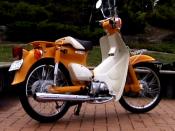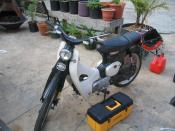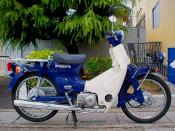�
Honda Case
In my analysis I will present the characteristics of the Honda's strategic orientation for its development and illustrate its efficiency by presenting its strengths and weaknesses.
Honda began in 1946 when Soichiro Honda established a Honda Technical Research Institute. It incorporated in 1948.Honda it was a visionary, he started with the idea of fitting an engine to a bicycle and his first product the ''Dream'' it was an instant hit. In 1949 Takeo Fujisawa joins Honda as head of finance and marketing and the company is starting to get a shape. The two made a ''strange team'' but an efficient one, Honda it was an inventor with ''mad'' technical skills that had the idea of having the newest product and being always one step before competitors while Fujisawa ''was concerned with the company's longer term strategy'' (Honda Case). From the beginning they targeted the segment of motorbikes which wasn't explored so they positioned the company on an almost niche market.
The company integrated the production of the key elements (engines, frames) but it outsourced all the other non-critical parts (Honda case). Honda start beneficiating of the facilities of the large scale production once with the ''Cub'' and Fujisawa was waiting this moment in order to apply his plan of increasing their productivity over the limit in order to grow faster than their competition. It was a risky measure but Fujisawa sensed the market potential once with the new motorbike the ''Super Cub'' and while promoting the new product they invested 10 billion yen in a factory to build 30.000 motorbikes a month. The success of the new model was based on his revolutionary design (engine, car) that along with experience represents the main advantages of the company. The next step in Honda's development is the expansion...


